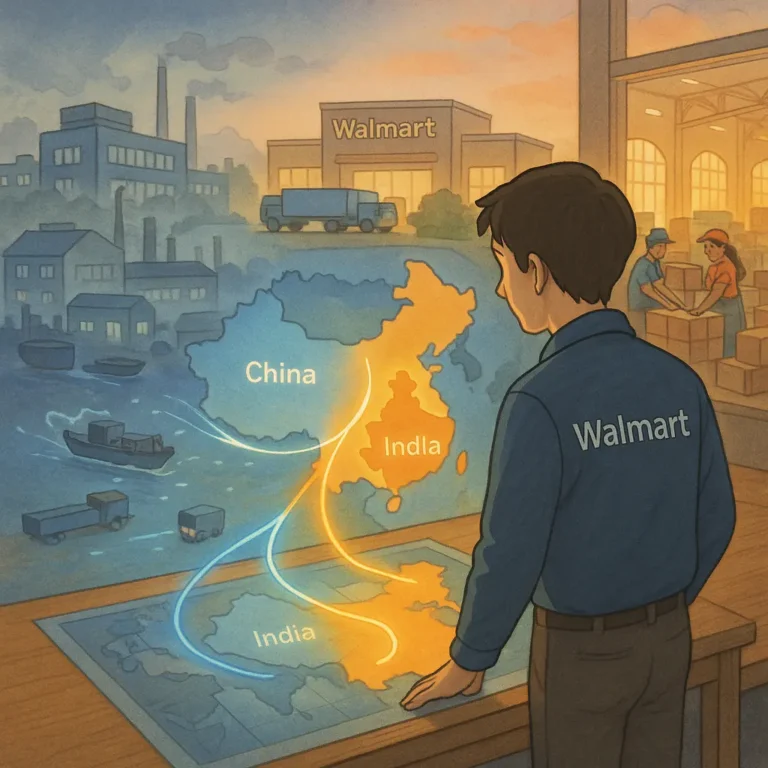
Supply chain and business operations are increasingly complicated. Long gone are the days of simple, straightforward processes or transactions. Today, you must go through different hoops and hurdles to make a simple purchase. One of the tools simplifying business operations today is procurement software, and in this article, we take a deep dive into it.
Procurement is a sensitive battle. The right weapons will get you far enough, but the wrong weapons will jeopardize the entire war that is your business or supply chain.
Introduction
Procurement is the focal point of any supply chain, making it a vital aspect of any business, but it doesn’t end there. Choosing the right software is almost as important. With so many options today, identifying the right one for your business or supply chain can be overwhelming.
In this article, I have outlined a comprehensive map to help simplify selecting the right software in the complex procurement software world. For supply chain managers and business owners in Africa, I have highlighted a few popular software prevalent on the continent and how they can help you enhance procurement operations.
In this guide, I also cover the basics and share some valuable insights on the benefits and implementation of procurement software. Whether you’re a small business looking for simple procurement software or a large enterprise needing a more robust solution, this guide is for you.
What is procurement software?
Put simply, procurement software is a computer-generated tool designed to help businesses and their supply chains manage the procurement process. It helps automate and streamline many of the manual tasks involved in the procurement process, such as purchasing orders, tracking inventory, and managing contracts.
Automating regular procurement procedures and providing strategic sourcing and supplier relationship management tools helps improve efficiency, reduce cost, and enhance compliance. Procurement software also allows for seamless coordination among procurement teams, stakeholders, and suppliers, resulting in a more efficient and transparent procurement ecosystem.
Benefits of procurement software
They are advantageous and beneficial to your business or supply chain in many regards, including:
# Increased efficiency
Manual tasks within the procurement operations, such as issuing purchase orders and maintaining inventories, can be automated using this procurement tool. This can assist your organization in saving time and reducing errors, resulting in enhanced efficiency.
# Cost savings
Procurement software can help your business or supply chain save money by automating various procurement activities. It does this by assisting you in negotiating better supplier rates, tracking spending, and identifying cost-cutting opportunities.
# Improved accuracy
The tools can assist your company in keeping precise records of its procurement activities, which can be helpful for audits. Procurement software can also help decrease errors and maintain regulatory compliance.
# Better supplier management
They provide much-needed assistance in better managing your suppliers. Businesses can use procurement software to track supplier performance, manage contracts, and find new suppliers.
# Enhanced collaboration
Procurement software can aid in improving communication and coordination across the many stakeholders engaged in the procurement process. Businesses and supply chains can use procurement software to communicate information, cooperate on projects, and measure progress.
Features to consider when selecting a Procurement Software
When selecting a procurement software solution, there are several key features to consider:
# Purchase order creation
The right software should allow you to create purchase orders quickly and easily. Purchase order creation should be customizable to meet the unique needs of your business or supply chain.
# Supplier management
Procurement software should provide tools for managing suppliers, such as supplier performance tracking, contract management, and adding new vendors.
# Invoice management
It should allow you to manage invoices efficiently, including processing invoices, tracking payments, and managing disputes.
# Inventory management
Procurement software should provide tools for tracking inventory levels, managing stock levels, and identifying when to reorder.
# Reporting and analytics
The tool should provide reporting and analytics tools to aid you in making informed decisions for your business or supply chain. The reporting and analytics section should include metrics such as spend analysis, supplier performance, and cost savings.
Types of procurement software
There are several types of procurement software available, including:
# E-procurement Software
E-procurement software is a cloud-based solution for handling the entire procurement process, from demand to payment. Many procurement procedures can be automated with e-procurement software, reducing errors and improving coordination between departments.
# Purchase Order Software
Purchase order software is a tool designed specifically for creating purchase orders quickly and easily. Purchase order software can help your business or supply chain create purchase orders that comply with regulations and reduce errors.
# Contract Management Software
Contract management software is a tool designed for managing contracts. Contract management software can help your business and supply chain keep track of contract deadlines, renewals, and compliance requirements.
# Procure to pay Software
Procure-to-Pay software, or P2P software, is a type of software specifically focusing on automating and streamlining the entire procurement process. From identifying a need to selecting potential suppliers, all the way to payment processing and reconciliation.
# Supplier Relationship Management (SRM) Software
SRM software is intended to make it easier to manage supplier relationships. It provides tools for supplier evaluation, performance monitoring, contract administration, and supplier cooperation to promote transparency and strategic alignment.
# Accounts Payable Software
Automation of the accounts payable process keeps track of when bills are due. You can use accounts payable software to track the status of your bills automatically and when they need to be paid. The software also allows you to automate and plan payment instalments and never miss a payment.
Cloud-based vs On-premise procurement software
When selecting a procurement software solution, there are typically two categories businesses or supply chains must choose from. They are cloud-based and on-premise solutions.
# Cloud-based solutions
Cloud-based procurement solutions are typically housed on the cloud and can be accessed or manipulated from anywhere in th world with a simple internet connection. Cloud-based procurement solution is simple to set up and does not require you to maintain its IT infrastructure.
# On-premise solutions
This procurement solution is installed on your company’s servers, and the IT department manages it on-premise. It allows you greater customization but requires more resources to maintain.
Top Procurement Software Vendors in Africa
1. SAP Ariba
SAP Ariba provides a full range of procurement solutions, including sourcing, contract management, supplier management, and procurement analytics. They have a strong presence in Africa and service a variety of sectors on the continent.
2. Oracle Procurement Cloud
Oracle Procurement Cloud offers full-service procurement solutions such as supplier management, sourcing, purchasing, and contract management. Their cloud-based platform is popular with businesses seeking scalable and integrated procurement software in Africa.
3. Coupa
Coupa is a cloud-based spend management tool that handles procurement, spending, and invoicing. Their products simplify and automate the procurement process. They are expanding their footprint rapidly throughout Africa.
4. Zycus
Zycus offers procurement software solutions for sourcing, contract, and supplier management. They provide configurable modules tailored to meet specific procurement requirements and have a growing African customer base.
5. Determine (Corcentric)
Determine, currently a part of Corcentric, provides procurement and contract management solutions that aid in streamlining and optimizing procurement operations. They offer a user-friendly platform with source-to-pay capabilities.
6. BravoSolution (formerly Jaggaer)
BravoSolution, now a division of Jaggaer, provides procurement and sourcing solutions to help firms manage supplier relationships, streamline sourcing activities, and improve procurement performance.
7. Medius (formerly Wax Digital)
Medius offers procurement and sourcing solutions to improve supplier collaboration and create cost savings. They provide a user-friendly platform with tools for requisitioning, supplier management, and contract management.
8. Basware
Basware provides procurement and finance solutions such as procure-to-pay, invoice automation, and e-invoicing. Their platform is designed to increase procurement efficiency, control, and compliance.
9. Proactis
Proactis offers procurement solutions such as spend analysis, sourcing, and contract administration. They have a foothold in Africa and offer configurable modules to accommodate various buying needs.
10. TradeShift
TradeShift is a cloud-based procurement and supply chain platform that assists organizations in streamlining procurement procedures, improving supplier communication, and digitizing invoice processing.
Procurement software implementation
The implementation requires careful preparation, stakeholder collaboration, and a systematic methodology. The following are the steps to follow:
Step 1: Define Objectives and Requirements
Define your goals for implementing the procurement software. Determine the precise functionalities and features required to suit your business’s or supply chain’s procurement needs. Scalability, connection with existing systems, and compatibility with your procurement processes are all important considerations.
Step 2: Conduct a Needs Assessment
Assess your current procurement processes and discover opportunities for improvement. Examine the gaps and pain points that the procurement software should address. Engage key stakeholders, including procurement specialists, IT teams, and end users, to collect feedback and meet their needs.
Step 3: Research and Select a Suitable Software
Make a clear implementation plan outlining the tasks, timelines, and responsibilities involved in the process. Identify and establish mitigation plans for any potential risks or obstacles. Ensure that all parties are communicating and cooperating effectively.
Step 4: Develop an Implementation Plan
Collect and sanitize the data needed for the procurement software, such as supplier information, product catalogues, and pricing details. To ensure seamless data flow, ensure that the software connects effectively with current systems such as ERP or finance systems.
Step 5: Prepare Data and System Integration
Gather and cleanse the necessary data required for the procurement software, such as supplier information, product catalogues, and pricing details. Ensure the software integrates smoothly with existing systems, such as ERP or financial systems, to enable seamless data flow.
Step 6: Configure and Customize the Software
Collaborate closely with the software provider to configure the program for your organization’s needs. Adapt workflows, approval processes, user roles, and other parameters to your procurement policies and practices.
Step 7: Provide Training and Support
Conduct training sessions to familiarize users with the software’s features, functionalities, and best practices. Ascertain that users understand how to utilize the system, such as creating purchase orders, managing approvals, and conducting other essential duties. Provide ongoing assistance and documentation to answer any queries or problems that may arise.
Step 8: Test and Validate
Test the software thoroughly to confirm that it fulfils your organization’s needs and performs as intended. To validate the software’s performance and correctness, run several scenarios, such as placing purchase orders, processing invoices, and generating reports.
Step 9: Pilot Implementation and Feedback
Initially, implement the software in a controlled environment or with a small set of users. Collect input from users and stakeholders to discover any areas for improvement or adjustments before rolling out the software across the enterprise.
Step 10: Monitor, Evaluate, and Improve
Continuously monitor the procurement software’s performance and usage. Collect user and stakeholder feedback to identify areas for improvement and implement necessary changes. Review key performance indicators (KPIs) regularly to analyze the impact of the software on procurement plans and procedures and overall corporate goals.
Procurement software integration
Procurement software should integrate with other business systems, such as accounting software and ERP systems. Integration can help streamline the procurement process and reduce manual data entry.
When selecting a procurement solution, ensure it integrates with your existing systems.
Procurement Software pricing models
Pricing models for procurement software differ depending on the provider and the product. Some suppliers provide a subscription-based approach in which businesses pay a monthly or annual charge for software use.
Other providers employ a pay-per-use approach, in which businesses pay for each transaction or purchase order that is made. Consider the pricing model and ensure it works within your budget when choosing a procurement software solution.
Procurement Software ROI Calculation
Calculating the ROI on your procurement solution can be difficult, but it is necessary to demonstrate the worth of the investment. Consider the anticipated cost reductions, enhanced efficiency, and other benefits the procurement solution will provide your business or supply chain. Compare all these against the initial cost of the software and the cost of maintaining it.
One very important aspect to consider when calculating the ROI is time. Every investment is time-bound. It should yield a certain return within a certain time, whether long-term or short-term. Factoring this will guide you on what to expect from the software and helps you assess if the software has been a success or failure after implementation.
FAQs on Procurement Software
Q1: What role does procurement software play in supplier management?
Supplier management is aided by procurement software, which centralizes supplier information, automates onboarding processes, monitors supplier performance, tracks contract compliance, and improves supplier communication and collaboration.
Q2: Is procurement software appropriate for small businesses?
Yes, it may help small firms by streamlining procurement operations, increasing productivity, assuring compliance, and allowing for better supplier management. There are other procurement solutions tailored to small enterprises’ demands and finances.
Q3: How long does it take to put procurement software in place?
The implementation timeline varies depending on factors such as the software’s complexity, the size of the organization, data migration requirements, and customisation requirements. On average, implementation can take several weeks to a few months, including planning, configuration, testing, and training.
Q4: Is it better to go with on-premises or cloud-based procurement software?
The decision between on-premises and cloud-based software is influenced by various factors, including your organization’s IT infrastructure, security requirements, budget, and scalability requirements. Cloud-based solutions frequently provide greater flexibility, ease of maintenance, and accessibility, whilst on-premises solutions provide greater data control.
Conclusion
Businesses can use procurement software to streamline the purchase process, eliminate errors, and save money. When choosing a procurement solution, consider the essential features, pricing model, and installation procedure.
Check that the software connects with your existing systems and has reporting and analytics capabilities to help you make educated decisions. Businesses may improve their procurement processes and achieve their objectives with the right procurement software solution.

Obinabo Tochukwu Tabansi is a supply chain digital writer (Content writer & Ghostwriter) helping professionals and business owners across Africa learn from real-world supply chain wins and setbacks and apply proven strategies to their own operations. He also crafts social content for logistics and supply chain companies, turning their solutions and insights into engaging posts that drive visibility and trust.








